- Issue 3 Pages 45-
- Issue 2 Pages 29-
- Issue 1 Pages 1-
- |<
- <
- 1
- >
- >|
-
Kojiro SHIMOJO2017 Volume 28 Issue 1 Pages 1-10
Published: January 15, 2017
Released on J-STAGE: January 14, 2017
JOURNAL FREE ACCESSDevelopment of metal separating reagents with high selectivity is necessary for efficient separation and recovery of valuable metals contained in industrial wastes, and removal and detection of toxic metals. We have developed novel metal separating ligands with a diglycolamic acid (DGAA) framework. The ligands have a tridentate coordination structure consisting of an amide group and a carboxy group connected by an ether chain and provide a metal separation ability superior to that of commercial ligands. Since the ligands can be synthesized simply in one step, this helps to reduce the production costs of the ligands. In the present review article, we report the extraction characteristics of DGAA-type ligand for 56 kinds of metal ions, extraction separation of rare-earth metal ions, and removal of toxic metal ions. Furthermore, a one-pot biological approach to fabricate DGAA-decorated gold nanoparticles has been developed using the DGAA-type ligand fused to the N-terminus of a gold-binding peptide. It was found that the DGAA-decorated gold nanoparticles can act as a high-sensitive colorimetric sensor for detecting toxic metal ions with color change.
View full abstractDownload PDF (2327K)
-
Kohei NAGOSHI, Tsuyoshi ARAI, Sou WATANABE, Yuichi SANO, Masayuki TAKE ...2017 Volume 28 Issue 1 Pages 11-18
Published: January 15, 2017
Released on J-STAGE: January 14, 2017
JOURNAL FREE ACCESSExtraction chromatography has attracted attention as a technique to recovery minor actinides (MA) from high-level radioactive liquid waste. In this study, we carried out various surface treatment to change the polarity of N,N,N’,N’-tetraoctyl diglycolamide (TODGA) adsorbent used in this process, and evaluated its adsorption performance. The surface treatments significantly changed the adsorption/desorption behavior of Nd(III) in nitric acid solution, in terms of the distribution coefficient, adsorption rate, and adsorption capacities. These effects were attributed to changes in the internal structure and hydrophilicity of the adsorbent. Our results suggest that it is necessary to optimize the adsorbent used in the separation and recovery of MA(III) by tuning its surface properties as well as the pore size or particle diameter.
View full abstractDownload PDF (1299K) -
Yumi MATSUMOTO, Yuji YADA, Takumi YAMANAKA, Tsuyoshi ARAI2017 Volume 28 Issue 1 Pages 19-28
Published: January 15, 2017
Released on J-STAGE: January 14, 2017
JOURNAL FREE ACCESSRare metals have seen an exponential increase in demand because of its widespread application in electrical and electronic devices. However, actual condition is that Japan can not help but depending import most all of rare metal. Moreover, supply situation is affected by changing global situation. Because, producing country is eccentrically-located. Therefore, it is necessary to generate and maintain a stable supply of rare metal. Currently, urban mine is draw attention as resource supply source. Rare metal is separated and recovered from urban mines by solvent extraction. However, this method is disadvantageous because of the use of organic solvents in large quantities. In this study, we focused on ionic liquid. Ionic liquid has a feature of non-volatility and fire retardancy. In this work, we report on performance about using ionic liquid as diluent of extractant.
View full abstractDownload PDF (1798K)
- |<
- <
- 1
- >
- >|